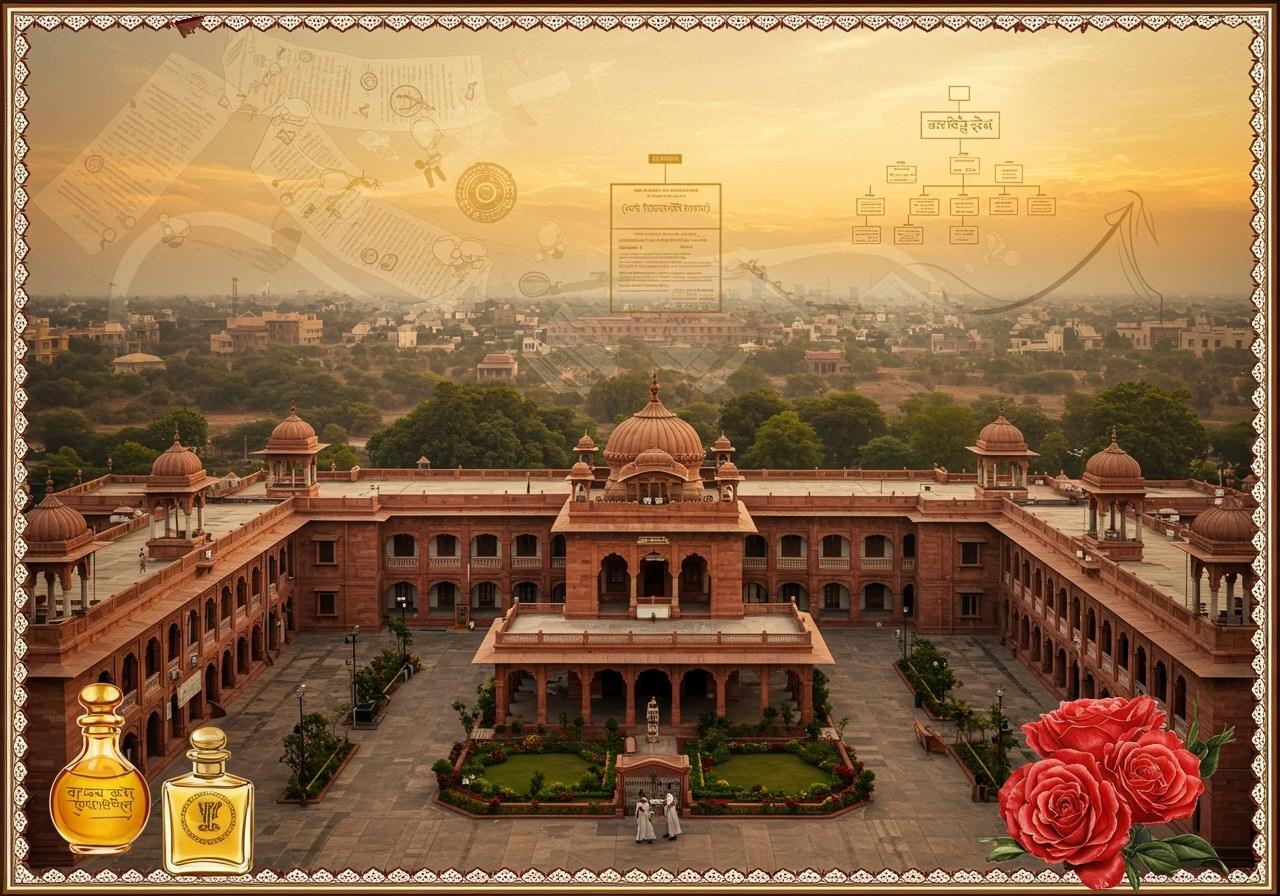
Located in Uttar Pradesh, Kannauj district, established on September 18, 1997, boasts a rich history and cultural heritage. This blog post delves into Kannauj’s administrative structure, key officials, and essential information for residents and visitors. Kannauj, historically known as the perfume capital of India, stands as a testament to efficient governance and vibrant cultural traditions.
Overview of Kannauj District
Kannauj, part of the Kanpur Division, covers approximately 2,276 square kilometers. The district comprises three tehsils: Kannauj, Chhibramau, and Tirwa, with a population of around 1.65 million. Well-connected by road and rail, Kannauj’s economy thrives on agriculture and small-scale industries, particularly its renowned perfume industry.
Administrative Framework of Kannauj
Kannauj’s administrative structure ensures effective governance and public service delivery. The District Magistrate (DM) leads the district, responsible for maintaining law and order, revenue collection, and overseeing development projects. Various departments, including health, education, agriculture, and public works, each headed by respective officers, contribute to the district’s smooth functioning. The Superintendent of Police (SP) plays a vital role in upholding law enforcement and public safety.
Key Officials in Kannauj District
- District Magistrate (DM): The DM serves as the chief executive officer of the district, overseeing all administrative functions and ensuring efficient governance.
- Superintendent of Police (SP): Responsible for maintaining law and order, the SP leads the police force and ensures public safety within the district.
- Chief Medical Officer (CMO): The CMO oversees healthcare services, manages hospitals and clinics, and implements health initiatives across the district.
- District Education Officer (DEO): The DEO manages educational institutions, implements educational policies, and promotes quality education within the district.
- District Agriculture Officer (DAO): The DAO supports farmers through various programs, provides agricultural guidance, and promotes sustainable farming practices.
- PWD Executive Engineer: The Executive Engineer supervises infrastructure projects, manages road construction and maintenance, and ensures the development of public infrastructure.
- District Development Officer (DDO): The DDO coordinates rural development activities, implements government schemes, and promotes overall development in rural areas.
Kannauj District Website and Online Resources
The official website of Kannauj district, developed and hosted by the National Informatics Centre (NIC) under the Ministry of Electronics & Information Technology, Government of India, offers valuable information and online services. Residents can access important documents, forms, and applications for various government services. The website also provides details on ongoing development projects, government schemes, and contact information for key officials. A grievance redressal system is available for addressing citizens’ complaints.
Kannauj: Pin Code, Connectivity, and More
Kannauj district uses multiple pin codes, with 209725 being the primary one. The district enjoys excellent connectivity through major highways like NH-91, state highways, and rural roads. Kannauj railway station connects the district to major cities like Delhi and Lucknow. Public transport, including buses and auto-rickshaws, is readily available. The nearest airport is Chaudhary Charan Singh International Airport in Lucknow, approximately 125 kilometers away.
Poojn.in: Supporting Traditional Practices in Kannauj
For residents seeking authentic puja items and ritual materials, Poojn.in offers a convenient online platform. With a wide selection of products, Poojn.in caters to the diverse cultural and religious needs of Kannauj’s community. Whether it’s pure copper items for daily puja, traditional dhoop and agarbatti, or complete puja samagri kits, Poojn.in ensures quality and authenticity. This online platform is particularly beneficial for busy administrators and residents, allowing them to easily access essential items for various religious ceremonies and rituals common in the region.
If you’re looking for Talmakhana seeds, you can find them here. For Suhaga (Borex), check out this link. And if you need Mangalam Camphor tablets, you can purchase them here.
Conclusion
Kannauj district exemplifies a harmonious blend of rich heritage and efficient governance. The district administration’s commitment to development, coupled with its dedication to preserving cultural values, makes Kannauj a promising region for growth and prosperity. This guide serves as a valuable resource for residents and visitors, providing essential information about Kannauj’s administrative structure, key officials, and online resources.


